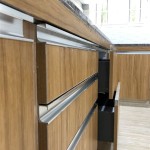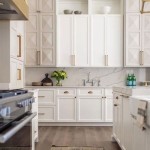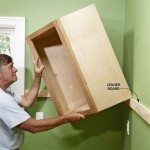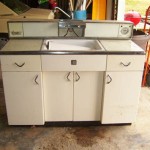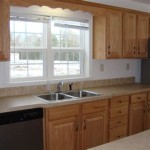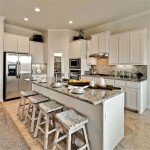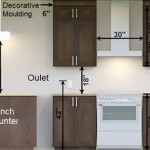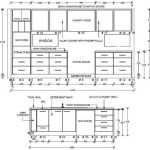Dovetail Paint Kitchen Cabinets Without Sanding Sheets: A Comprehensive Guide
Painting kitchen cabinets can dramatically transform the aesthetic of a kitchen without the expense of a complete renovation. While traditional methods often involve extensive sanding to prepare the surface for paint, alternative techniques allow for painting dovetail kitchen cabinets without relying heavily on sanding sheets. This approach can save time, reduce dust, and minimize the potential for damaging intricate cabinet details, particularly those found in dovetail joints. This guide provides a detailed overview of how to successfully paint dovetail kitchen cabinets without sanding sheets, emphasizing proper cleaning, priming, and painting techniques.
Key Point 1: Thorough Cleaning and Degreasing as the Foundation
The success of painting kitchen cabinets without significant sanding hinges on the effectiveness of the cleaning process. Kitchen cabinets, especially those near the stove, tend to accumulate grease, grime, and food splatters. These contaminants can prevent paint from adhering properly, leading to chipping, peeling, or an uneven finish. Therefore, a thorough cleaning and degreasing process is essential before any other steps are taken.
The first step involves removing all hardware from the cabinets, including knobs, pulls, hinges, and any other decorative elements. Store these items in a safe place, labeling them if necessary, to ensure easy reinstallation. Once the hardware is removed, the cabinets should be wiped down with a dry cloth or brush to remove any loose dust or debris. This initial cleaning helps prevent the spreading of contaminants during the wet cleaning phase.
The next step involves using a degreasing cleaner specifically formulated for kitchen cabinets. Several commercial degreasers are available, but a solution of warm water and dish soap can also be effective for less heavily soiled cabinets. Apply the degreaser liberally to all surfaces of the cabinets, including the doors, drawer fronts, and frames. Use a non-abrasive scrub brush or sponge to work the cleaner into the surface, paying particular attention to areas where grease and grime are concentrated, such as around handles and near the stove.
After scrubbing, rinse the cabinets thoroughly with clean water to remove any remaining degreaser residue. It is important to ensure that all soap residue is removed, as it can interfere with paint adhesion. Use a clean cloth or sponge to wipe down the cabinets, changing the water frequently to maintain a clean rinsing solution. Once the cabinets are rinsed, allow them to dry completely before proceeding to the next step. This drying process may take several hours or even overnight, depending on the humidity and temperature of the environment.
For cabinets with stubborn grease stains, a stronger cleaning solution may be necessary. Trisodium phosphate (TSP) is a powerful degreaser that can be effective in removing tough stains. However, TSP is a strong chemical and should be used with caution. Always wear gloves and eye protection when working with TSP, and ensure adequate ventilation in the work area. Follow the manufacturer's instructions for mixing and applying TSP, and rinse the cabinets thoroughly after use.
An alternative to TSP is a mixture of baking soda and water. Baking soda is a natural abrasive and degreaser that is gentler than TSP but can still be effective in removing grease stains. Make a paste of baking soda and water and apply it to the stained areas. Let the paste sit for a few minutes before scrubbing with a non-abrasive brush or sponge. Rinse thoroughly with clean water.
Once the cabinets are completely dry, inspect them carefully for any remaining grease or grime. If any spots are found, repeat the cleaning process until the cabinets are completely clean. A clean and degreased surface is the most crucial factor in achieving a durable and long-lasting paint finish without the need for heavy sanding.
Key Point 2: Utilizing Liquid Deglossers and Adhesion Primers
Even after thorough cleaning, the existing finish on kitchen cabinets may be too glossy or smooth to allow paint to adhere properly. In these cases, liquid deglossers and adhesion primers can be used to create a more receptive surface without the need for extensive sanding. Liquid deglossers are chemical solutions that dull the existing finish, while adhesion primers create a bonding layer that allows the paint to adhere strongly to the cabinets.
Liquid deglossers typically come in spray or wipe-on formulations. To use a liquid deglosser, first ensure that the cabinets are clean and dry. Apply the deglosser according to the manufacturer's instructions, using a clean cloth or sponge. In most cases, the deglosser should be applied evenly to all surfaces of the cabinets and allowed to sit for a specified amount of time before wiping off any excess. The deglosser will dull the finish, creating a slightly rougher surface that paint can grip more effectively. It is important to follow the manufacturer's instructions carefully, as improper use of a liquid deglosser can damage the existing finish or create an uneven surface.
Adhesion primers are designed to bond to the existing finish and provide a receptive surface for the paint. These primers typically contain ingredients that etch the surface, creating a mechanical bond that holds the paint in place. Several types of adhesion primers are available, including water-based, oil-based, and shellac-based primers. The choice of primer will depend on the type of paint being used and the condition of the cabinets.
Water-based adhesion primers are generally low in VOCs (volatile organic compounds) and are easy to clean up with soap and water. They are suitable for use with water-based paints and can provide good adhesion to a variety of surfaces. Oil-based adhesion primers are more durable and provide better adhesion to glossy or slick surfaces. They are also more resistant to stains and moisture. However, oil-based primers contain higher levels of VOCs and require mineral spirits for cleanup. Shellac-based adhesion primers are the most durable and provide excellent adhesion to almost any surface. They are also fast-drying and stain-blocking. However, shellac-based primers are brittle and can crack if applied too thickly.
Regardless of the type of adhesion primer used, it is important to apply it evenly and in thin coats. Use a high-quality brush or roller to apply the primer, and avoid applying too much primer in one area. Allow the primer to dry completely before applying the paint. The drying time will vary depending on the type of primer and the environmental conditions. Follow the manufacturer's instructions for drying time and re-coating.
In some cases, a combination of liquid deglosser and adhesion primer may be necessary to achieve optimal results. If the cabinets have a particularly glossy or slick finish, applying a liquid deglosser first can help to improve the bond between the primer and the surface. Follow the manufacturer's instructions for both the deglosser and the primer, and ensure that the deglosser is completely dry before applying the primer.
When selecting an adhesion primer, consider the type of paint that will be used. Some primers are specifically formulated for use with certain types of paint. For example, some primers are designed for use with latex paints, while others are designed for use with oil-based paints. Using the correct primer for the paint will help to ensure optimal adhesion and a long-lasting finish.
Key Point 3: Painting Technique and Product Selection
The success of any painting project, especially one that minimizes sanding, relies heavily on the chosen paint, application tools, and technique. Selecting the right paint and using the proper tools and methods can result in a professional-looking finish that is both durable and aesthetically pleasing.
For kitchen cabinets, durable and washable paints are essential. Acrylic latex paints are a popular choice due to their durability, low VOC content, and ease of cleanup. Alkyd paints, which are oil-based, offer excellent durability and a smooth finish but have higher VOC content and require mineral spirits for cleanup. Consider the pros and cons of each type before making a decision. Specific cabinet paints formulated for high use surfaces are also a good option.
When choosing a paint sheen, consider the desired look and the level of maintenance required. Satin or semi-gloss sheens are popular choices for kitchen cabinets because they are easy to clean and provide a subtle sheen that enhances the appearance of the cabinets. Gloss sheens are more durable and easier to clean but can also highlight imperfections in the surface. Matte sheens are less durable and more difficult to clean but provide a softer, more modern look. The chosen sheen should complement the overall style of the kitchen.
The application method plays a crucial role in achieving a smooth and even finish. Using high-quality brushes and rollers is essential. For cabinets with intricate details, such as those with dovetail joints, a high-quality brush with soft bristles is necessary to reach all the nooks and crannies. A small foam roller can be used for the larger, flat surfaces of the cabinets. Consider investing in a paint sprayer for larger projects or those with a lot of detailed work. Paint sprayers provide a smooth and even finish with minimal brush strokes.
Before painting, protect the surrounding area with drop cloths and masking tape. Use painter's tape to mask off any areas that should not be painted, such as walls, countertops, and appliances. Apply the paint in thin, even coats, allowing each coat to dry completely before applying the next. Applying too much paint in one coat can lead to drips, runs, and an uneven finish. Two or three thin coats are typically better than one thick coat.
When painting dovetail joints, use a small brush to carefully apply paint to the inside corners and edges of the joints. Avoid applying too much paint, as this can cause the paint to pool and create an uneven finish. Use a dry brush to feather out any excess paint and ensure a smooth transition between the painted and unpainted surfaces.
After painting, allow the cabinets to dry completely before reinstalling the hardware. The drying time will vary depending on the type of paint and the environmental conditions. Follow the manufacturer's instructions for drying time and recoating. Once the cabinets are completely dry, carefully reinstall the hardware, ensuring that it is properly aligned and secured. Clean the surrounding area and remove the drop cloths and masking tape.
Proper ventilation is important during the painting process. Open windows and doors to provide adequate airflow, or use a fan to circulate the air. Wear a respirator mask to protect yourself from inhaling paint fumes. Taking these precautions will help to ensure a safe and comfortable painting experience and contribute to a quality finish.

How To Paint Kitchen Cabinets Tips For A Smooth Finish West Magnolia Charm

How To Paint Kitchen Cabinets Tips For A Smooth Finish West Magnolia Charm

How To Paint Kitchen Cabinets Tips For A Smooth Finish West Magnolia Charm

How To Paint Kitchen Cabinets Tips For A Smooth Finish West Magnolia Charm

How To Paint Kitchen Cabinets Tips For A Smooth Finish West Magnolia Charm

How To Paint Kitchen Cabinets Tips For A Smooth Finish West Magnolia Charm

How To Make Rustic Kitchen Cabinets By Refinishing Them The Best Stain Color Amanda Katherine

Paint Color Inspiration For Kitchen Cabinets In 2024 Sherwin Williams Colors

Best Paint For Cabinets Kitchen Cabinet Colors The Harper House

Norwich Series Light Gray Painted Cabinets Cs Hardware
Related Posts

